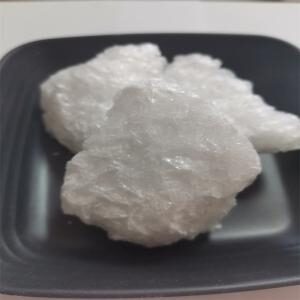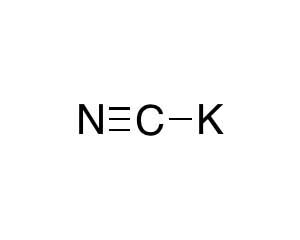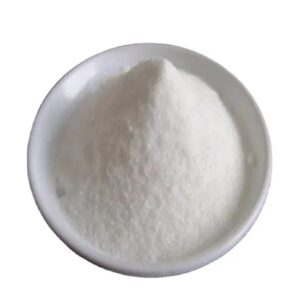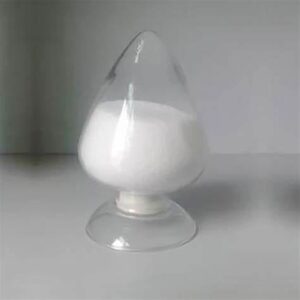Buy factory Boric Acid/ CAS 10043-35-3 / 11113-50-1/ wholesale
Boric Acid (H₃BO₃): Properties, Applications, Safety, and Regulatory Guidelines
Introduction
Boric Acid (H₃BO₃), also known as hydrogen borate, is a versatile inorganic compound widely used in industrial, laboratory, and household applications. Its unique chemical and physical properties make it a valuable material in glass, ceramics, agriculture, and chemical research.
This article provides a comprehensive overview of Boric Acid, covering:
- Chemical and physical properties
- Industrial, research, and commercial applications
- Safety and handling guidelines
- Regulatory compliance
Informational: Chemical Properties of Boric Acid
- Chemical Formula: H₃BO₃
- Molecular Weight: 61.83 g/mol
- CAS Number: 10043-35-3
- Appearance: White crystalline powder or granules
- Solubility: Soluble in water, slightly soluble in alcohol
- Density: 1.435 g/cm³
- Melting Point: 170.9 °C (decomposes)
Key Characteristics
- Weak Acid: Acts as a Lewis acid, reacting with alcohols to form borate esters.
- Antimicrobial Properties: Naturally inhibits growth of fungi and bacteria, useful in agriculture and preservation.
- Thermal Stability: Stable at moderate temperatures, decomposes to boron oxide at higher heat.
- Environmental Presence: Naturally occurring in mineral deposits and borate-rich waters.
Navigational: Industrial and Research Applications
- Glass and Ceramics Industry:
- Boric Acid is a key component in borosilicate glass and ceramic glazes.
- Improves thermal resistance, durability, and chemical stability.
- Agriculture:
- Used as a micronutrient fertilizer for boron-deficient soils.
- Promotes plant growth, flowering, and fruit development.
- Laboratory and Research Applications:
- Serves as a buffering agent in chemical and biological studies.
- Used in the preparation of borate reagents and analytical experiments.
- Industrial and Household Uses:
- Flame retardant in polymers and textiles.
- Preservative in wood treatment and cosmetics.
- Mild antiseptic in certain medical and cleaning products.
Commercial and Industrial Applications
- Glass Manufacturing: Enhances strength and thermal shock resistance.
- Ceramics and Enamels: Provides smooth, durable, and chemically resistant coatings.
- Fertilizer and Soil Amendment: Corrects boron deficiency in crops.
- Flame Retardants and Polymers: Incorporated to reduce flammability.
- Analytical Chemistry: Acts as a reagent or buffer in laboratory studies.
Industrial applications require high-purity grades and compliance with environmental and safety regulations.
Safety and Handling Guidelines
Boric Acid is generally low-toxicity, but safe handling is recommended:
- Personal Protective Equipment (PPE): Gloves, goggles, lab coat, and dust mask when handling powder.
- Storage:
- Store in cool, dry, ventilated areas.
- Keep away from strong reducing agents and moisture.
- First Aid Measures:
- Inhalation: Move to fresh air if dust inhaled; seek medical attention if irritation persists.
- Skin Contact: Wash thoroughly with soap and water.
- Eye Contact: Rinse with water immediately.
- Ingestion: Low toxicity in small amounts; avoid deliberate ingestion.
- Spill Management: Sweep up powder and dispose of according to local environmental regulations.
Regulatory and Legal Considerations
Boric Acid is widely regulated for industrial, agricultural, and household applications:
- Agricultural Use: Approved as a micronutrient fertilizer by agencies such as EPA and EFSA.
- Occupational Safety: OSHA sets permissible exposure limits (PEL) for airborne dust.
- Environmental Compliance: EPA and local authorities regulate disposal, emissions, and water contamination.
- Industrial Compliance: ISO and REACH standards ensure safe production and distribution.
Commercial and Transactional Guidance
Purchasing Boric Acid
- Purity Grade:
- Industrial Grade: 95–99% for glass, ceramics, and polymers
- Laboratory Grade: ≥99% for analytical and research purposes
- Agricultural Grade: 90–95% for fertilizer applications
- Supplier Verification:
- Purchase from ISO-certified or GMP-compliant suppliers
- Verify Certificates of Analysis (COA) for purity, moisture content, and particle size
- Storage and Logistics:
- Store in airtight, moisture-resistant containers
- Bulk shipments require dry, ventilated storage
- Pricing and Bulk Orders:
- Cost-effective for industrial and agricultural applications
- Laboratory-scale orders focus on high purity and analytical suitability
Analytical and Research Use Case
In laboratory research:
- Prepare borate buffers or reagents for chemical experiments.
- Use as a source of boron in plant nutrient studies.
- Incorporate in materials research for glass, ceramics, or polymer development.
Its stability, solubility, and buffering capacity make it a reliable chemical for industrial and research purposes.
Environmental Considerations
- Overuse in soil can lead to boron toxicity in plants.
- Avoid discharge into aquatic environments, as it can affect water chemistry.
- Follow local disposal regulations for laboratory, agricultural, and industrial waste.
Conclusion
Boric Acid (H₃BO₃) is a versatile chemical with applications in glass, ceramics, agriculture, polymers, and laboratory research. Its thermal stability, buffering capacity, and antimicrobial properties make it indispensable for industrial, research, and agricultural use.
By sourcing from certified suppliers, following safety protocols, and adhering to regulatory compliance, Boric Acid can be used safely and effectively in research, industrial, and commercial contexts.










